
JOIN US
GET OUR KUNEKUNE
NEWSLETTER
New and highly discounted products, fresh and hot stories & useful information
KuneKune Pig Colors and KuneKune Breed Standards
KuneKune Colors
KuneKune Pig Colors
KuneKunes are available in various colors and it is important to identify the right color for registration purposes. To help you with this, a Kune Kune colors chart is provided below. This chart will assist you in determining the precise color of your pig. We also explain how black/white differs from white/black and other useful information about pig colors of the KuneKune colors.
Under the pig color chart, you will find the breed standards for KuneKune pigs. Don't forget to check out the examples and further information on explaining the KuneKune pig breed standards.
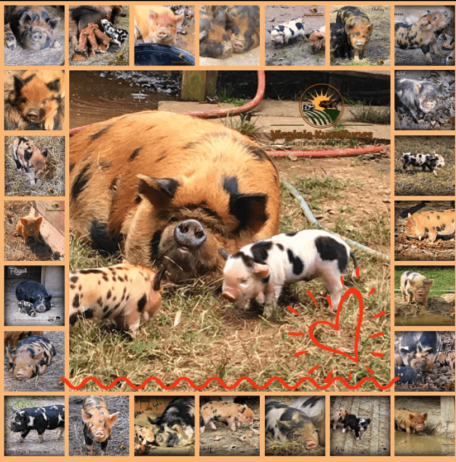
Click to be re-directed to these sections of the page or the breed standards explained with examples.
Kune Kune Colors for registration purposes
Kune Kune colors can be a bit confusing when you first become a breeder. However, every piglet will be marked uniquely which I loved about the breed when we were breeding. Not only are you excited to see if they are male or female piglets born and how many wattles, they have but, also the amazing color variations you will get with Kune Kune Colors.
We will simplify it for you. Whichever color is most dominant is listed first. Example: If the Kune has more black than white. That is Black/White. If there is more white than black it is a white/black. The predominant color is listed first.
Below is a Kune Kune colors chart to use. It is best to select the color when you are doing registrations versus when you enter the litter notification. At times KuneKune piglets can change colors while they are growing. In IKKPS we add the colors once they are registered. Whichever color there is more of is what is listed first.
KuneKunes also come in solid colors. Some breeders prefer the solid colors as to those spotted varieties. Taking this even further some KuneKunes are belted, banded or high percentage white. While not a typical KuneKune trait they are still allowed to be registered and shown in all KuneKune Registries.
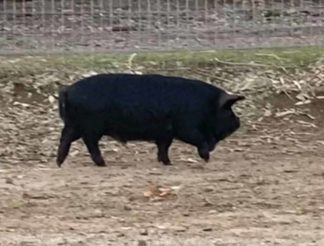
photo courtesy of Lisa Montoya, Hogs n Kisses KuneKunes
Black
solid black - no white

photo courtesy of Lisa Montoya, Hogs n Kisses KuneKunes
Black/ White
mostly black with some white

photo courtesy of Lisa Montoya, Hogs n Kisses KuneKunes
White/Black
mostly white with some black

photo courtesy of Lisa Montoya, Hogs n Kisses KuneKunes
Brown
solid brown - looks black as adult - no white

photo courtesy of Kathy Petersen, Virginia KuneKunes
Brown/ White
mostly Brown with some white
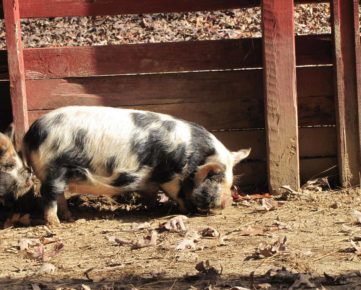
photo courtesy of Kathy Petersen, Virginia KuneKunes
White/Brown
mostly white with some brown
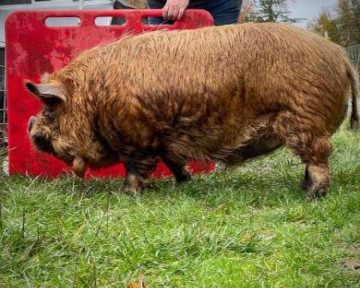
photo courtesy of Lisa Montoya, Hogs n Kisses KuneKunes
Ginger
solid ginger - no white

photo courtesy Lisa Montoya, Hogs n Kisses KuneKunes
Ginger/Black
mostly ginger with some black
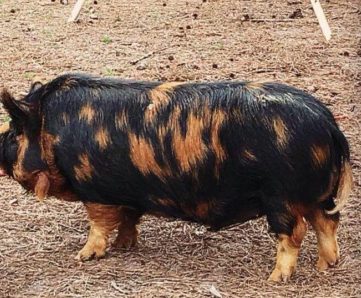
photo courtesy of Kathy Petersen, Virginia KuneKunes
Black/Ginger
mostly black with some ginger
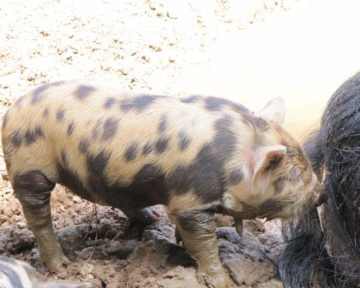
photo courtesy of Kathy Petersen, Virginia KuneKunes
Ginger/Brown
Mostly ginger with brown
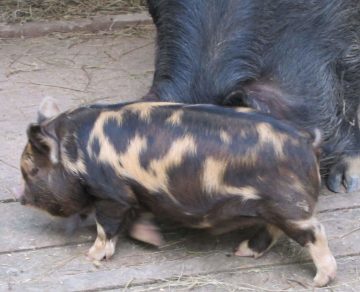
photo courtesy Kathy Petersen, Virginia KuneKunes
Brown/Ginger
mostly brown with ginger
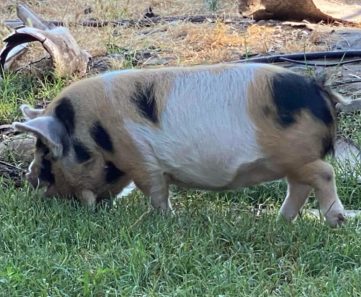
photo courtesy of Lisa Montoya, Hugs n Kisses KuneKunes
Tri Belted
Ginger/Black Banded/Belted
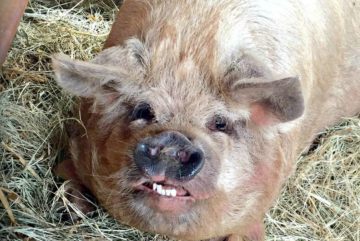
photo courtesy of Kathy Petersen
Cream
solid Cream
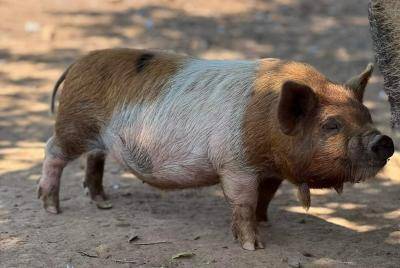
photo courtesy of Mikayla Audin, Bittersweet Barn
Belted, Banded
White band around body or sometime orange
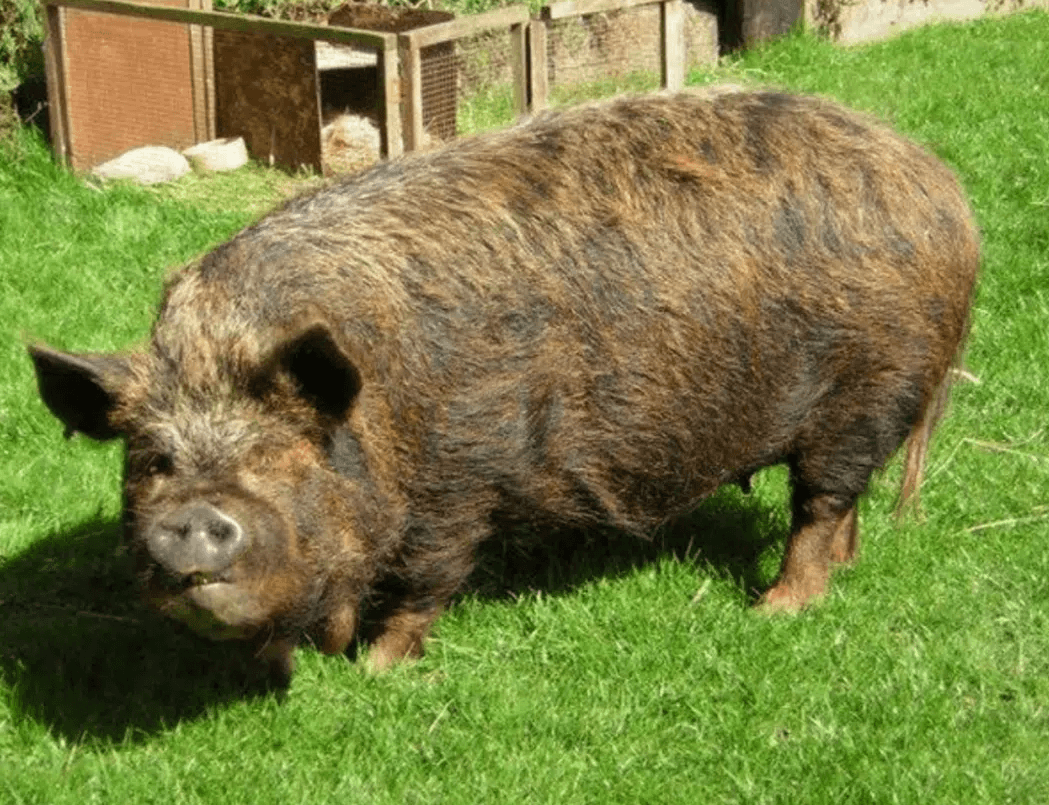
photo courtesy of the British KuneKune Pig Society
Gold Tip
Rarely seen in the USA
KuneKune Pig Colors - Vast array of colors

Breed Standards
KuneKune Breed Standard
KuneKune Breed Standards help breeders know what the standards of excellence are and help them achieve quality breeding in each generation produced.
Each KuneKune Registry will have its own KuneKune Breed Standards. While most are remarkably similar there will be some differences between different KuneKune organizations.
KuneKune Breed Standards
These are the breed standards of excellence that breeders should strive for with each generation. These are also the breed standards that will be utilized in our conformation KuneKune Shows. If you want to fully understand the breed standards visit our KuneKune Breed Standards Explained Page.

Head: The head should be rounded and broad with nice spacing between the eyes
Wattles: 2 wattles are the breed standard and are a goal we all strive for. Wattles should be well attached, and placement is under the jowl.
Ears: Ears can be slightly inclined forward, floppy, and folded are acceptable. They should not block the eyes.
Neck: should be short and thick
Back: should be level or slightly arched, strong firm top line
Tail: high to medium-high setting just at the top of the rump and slightly level with the top line
Legs: strong, well-boned legs that are straight with strong pasterns.
Feet: level and slightly closed
Body: Chest should be wide to moderate, level shoulders and rounded hams.
Eyes: Should have an unblocked vision
Snout – moderate to short snout that has a thickness to it.
Colors: any color on the color chart
Temperament: calm, easy to handle, curious and friendly
Female: should have even teat space on each side with the even amount of teats
Male: should have evenly spaced teats with the same number on each side, testicles should be easy to view when mature, and male should reflect a male-like physique.
Health: The condition must be that the pig can easily run or walk comfortably. Not overweight.
These are the KuneKune Breed Standards that will be used for judges doing our Virtual KuneKune Shows. Be sure to check out our breed standards explained page for in-depth information about each of these standards with examples.
Registry Office
17500 Hamilton Arms Court Dewitt, VA 23840